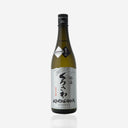You’ll really sound like a pro if you can pull this tongue twister out on a dime. The name translates to “5 million koku,” which is a reference to a bumper crop yield early in its development. For context, one “koku” of rice is 180 liters in volume. That’s a huge amount of rice!
Gohyakumangoku was developed in 1957 for Niigata prefecture’s cold climate and dry style. It grows quickly


All about sake
-
 Introduction
Introduction
Welcome To Your Sake Journey!
-
 Lesson 1
Lesson 1
What Is Sake?
-
 Lesson 2
Lesson 2
What Is Sake Made of and How Is It Made?
-
 Lesson 3
Lesson 3
What Is Rice Polishing Ratio?
-
 Lesson 4
Lesson 4
Types of Sake
-
 Lesson 5
Lesson 5
How To Store Sake
-
 Lesson 6
Lesson 6
How To Drink and Serve Sake
-
 Lesson 7
Lesson 7
Food Pairing Guide
-
 Lesson 8
Lesson 8
Best Sake Bottles and Brands for Beginners

























